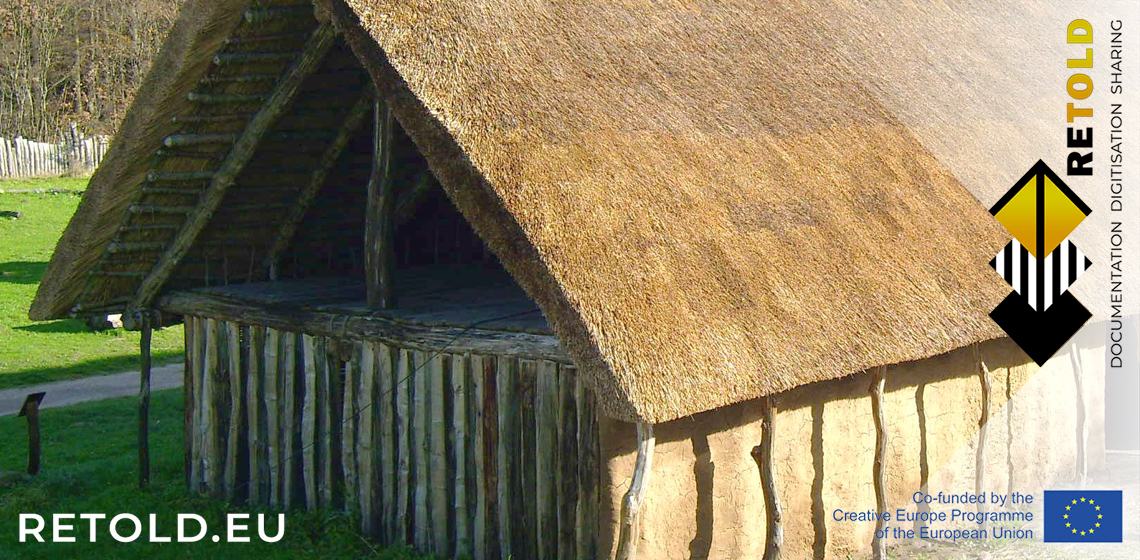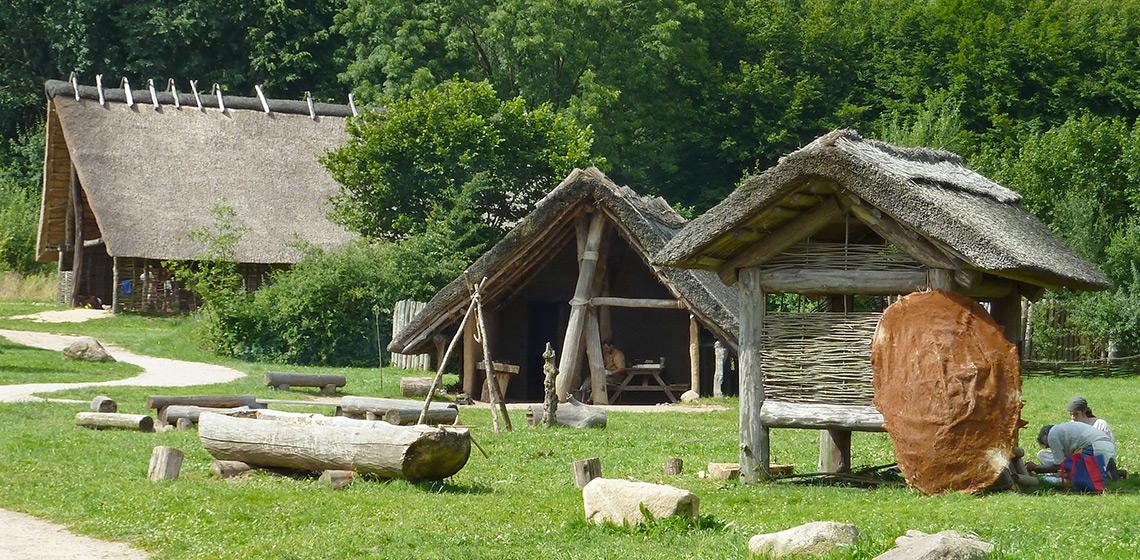
The motivation and purpose of the RETOLD project is to capture and preserve the wealth of data from evidence informing building reconstructions and craft processes of open-air museums. These data urgently need to be collected and documented in a standardised form, so that they can be used for applied research and thus disseminated to expand knowledge of material and intangible heritage, including stories and traditional craftsmanship. Additionally, the project seeks to develop and use alternative formats of oral histories as a way of share intangible cultural heritage with a wide audience. From an artistic point of view, immersive media are to date under-explored in terms of their creative potential, particularly in cultural and heritage contexts.
Introduction
During the first user research phase of the RETOLD project, Nüwa conducted a pilot interview with one of the project partners, Rüdiger Kelm at AÖZA, Germany.
During this interview, Nüwa captured first impressions of how an open-air museum in Europe might adopt and use digital technology, particularly in day-to-day documentation and communication. It was of particular interest to learn what type of problems might emerge, and what ambitions and expectations this museum has of for digital tools.
With input from all project partners - Museumsdorf Dueppel, ASTRA, Universitad Autonoma de Barcelona and EXARC-, a survey was drafted to expand the reach of the user research phase.
Survey: Methodology, Goals and Objectives
The goal of the survey was to gain an overview of the state-of-the art digital technology and tools in the context of European open-air museums so that we could identify the type of organisation and museum worker who might benefit most from the output of the RETOLD project.
The survey was developed first as a draft, and then underwent two rounds of feedback from project collaborators. It was disseminated via Google Forms, and responses were solicited through the EXARC network. Responses were collected between mid-February and 31st March 2021.
We specifically wanted to know:
- How open air museums in Europe currently use digital media and tools.
- Their needs and expectations are with regard to digitization.
Our survey was designed to both gain insights into the scale of potential issues with digitisation, but also to provide a starting point for further research into attitudes towards digital technology within the museum organisations.
We expected the survey answers:
- To help us gain insights into the state of the art regarding digitization, documentation and communication in open-air museums;
- To help us understand current work practices surrounding digital technologies extant in open air museum organizations and practice;
- To describe the motivations and expectations of organisations interested in digitisation;
- To describe frustrations and obstacles faced by organisations interested in digitisation;
- To identify museums willing to participate in further user research.
As is often the case in user research, a mixture of qualitative and quantitative survey data was preferable, so that sufficient context for the responses was available.
25 replies were received, in addition to the pilot survey responses from project partners. One reply had to be removed, as it was obvious spam.
Initial Observations
Context
The range of the participating museums was very wide, but most of them are specialized in a certain time period; there are only very few museums which show the whole range of prehistory.
With the main audience target group of school classes (84 % of responses), it was became obvious that the archaeological open air museums ( AOAMs) see themselves primarily as educational institutions. Tourists are also of great importance as an audience.
Use of digital technology
An initial analysis of the survey data yielded some interesting observations regarding the scope and scale of the problems surrounding digital tools and technology used in open-air museums for documentation and communication:
- Most of the museums are documenting by “classic” / traditional means (with paper archives etc.);
- App. ⅓ are using only one documentation method (film, photos or digital).
- Exclusively digital documentation is very unusual for most of the museums so far (only 3 of 25!).
Most of the museums think that they have to improve their strategic methods and work more systematically in the future. The survey responses suggest that there is a need for more digital expertise in the form of external experts or permanent staff. Some museums have just started their work with digital services.
As main obstacles for a better digitisation the museums name (in this order):
- No digital knowledge / no experts
- No time for digitisation processes
- Not enough money
- Rejection of digital technologies (sometimes seen as concurrence to the classic museum work)
Areas in which digital technology could be deployed more effectively were audience liaison and documentation (app 65%) - museums principally identified the potential in these areas. At the same time, project management and archiving were also represented (app 40%).
Next Steps
A more detailed report on the survey results will recommend further action to be taken with regards to user research.
With input from the project partners, we will first prioritise the themes and issues emerging from the survey results, sorting them into user goals/needs, motivations, frustrations/obstacles and notes on the technological context.
Then, more in-depth interviews with selected museum representatives will follow, so that we will better understand their specific needs in terms of digital technology adoption, especially documentation and communication.

There are two partners in the RETOLD project which are responsible for identifying opportunities for adoption of audiovisual and 3D media with specific reference to audience engagement.
Nüwa Digital Media Content Production Studios Ltd (IE)
Nüwa is a Dublin-based digital media agency specialising in digital strategies and production for the cultural sector. Nüwa provides a collaborative environment in which creators, designers and technologists explore the potential of audiovisual and digital media and their value for cultural, academic and architectural organisations. Read More
Steinzeitpark Dithmarschen (DE)
Since 1997, the Archaeological-Ecological Centre Albersdorf (AÖZA) in Dithmarschen, western Schleswig-Holstein, is working on the aim to re-establish a cultural landscape from the Neolithic on an area of about 80 acres. Lying close to megalithic tombs and grave mounds dating from the first farmers in Northern Germany, the site offers educational activities. Read More


